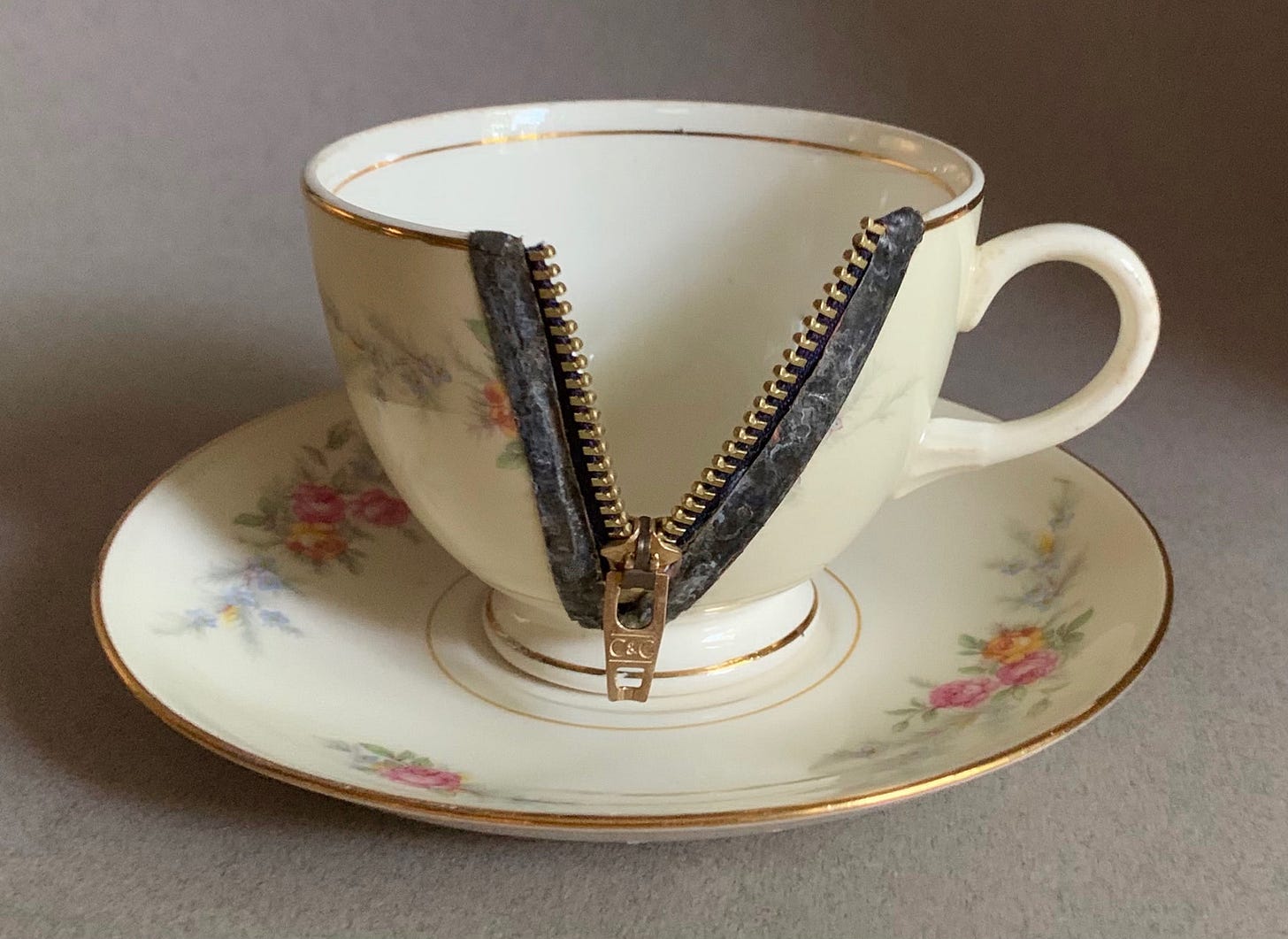I quit my job yesterday. I'm embarking on being a full-time author. Last time I tried this, I contracted a horrible case of full-blown writer's block. Any suggestions on how to avoid that? Any other advice?
Alle sez:
Get yourself a good schedule that includes working out - preferably at the same time every morning. Do that, eat breakfast, make a perfect cup of tea, and settle down to work. 5 minutes a day, to start. That time will grow.
PS. For those not yet able to embark full-time (I hear that; took me years): you can use your job as a way to instill a writing schedule. Take five minutes of your lunch break and write. Every day. Again: that time will grow.
To make the perfect cup of tea: you need four kitchen utensils. That’s all. Oh, and a teabag …
This process takes a bit more planning and effort than plopping a teabag into water, but—humor a tea snob, here: if you are plopping a teabag into water, the water is probably lukewarm and your tea tastes yucky.
And you don’t get the eight minutes the tea brews to sniff loveliness as ideas flow, gel, and multiply without thinking about them.
Leaf-tea drinkers rinse their tea. Let us treat our teabag with the attention given to leaf. If the detail of the below stresses you out, use boiling water, and do only C—3 & 4, below (rinsing your tea) and D—1 (steeping it for the correct time).
You need:
one teabag
a 16-ounce measuring cup, glass or Pyrex;
a teacup and saucer
a kitchen towel or two
a timer
Optional: milk and/or sweetener. (They decrease marginally tea’s nutritional value. Nonetheless, you will drink a greater amount of tea if you like it.)
To prepare:
A. Measure: bring 2-1/2 cups of water per teabag to a rolling boil.
Nothing less than the correct amount of fully boiled water will brew tasty tea.
Half-fill the measuring cup.
Keep the kettle at a full boil.
When the measuring cup grows warm to touch from the outside, pour the contents into your empty teacup.
B. Warm: As your mug heats, place the dry teabag into the warmed measuring cup.
C. Rinse: Generously cover the teabag with very hot water.
Black is the only leaf that holds up under boiling water.
For green, white, or oolong: turn off the heat when the water reaches a boil.
Let it cool for three seconds before pouring.
Black or green, suffuse for only a few seconds.
(I’m qualifying “tea” as those beverages derived from the Camilla sinensis bush. Herbals—technically called “tisanes”—require a process better described by the backs of packages. However, the benefits of making fresh tea are unilateral: pausing, re-integrating by stimulating a different set of senses and responses, and mostly, NOT thinking about the work.)
Toss the resulting liqueur. (Or save it for your plants.)
In addition to rinsing the leaves, this first, quick steep opens them prior to the full brew.
Blossoming the leaves greatly improves the resulting flavor.
D. Two steeps
For the final, the primary steep, pour the package-recommended amount of boiling water (for black) or just-finished-boiling water (for green, white, oolong) over the soggy teabag still in the measuring cup.
Cover the mouth of the measuring cup with the saucer. Sealing the vessel steams the leaves as they steep, releasing even more flavor.
If you have a tea cozy, use it. If not, you can wrap the cup-and-saucer in one or two kitchen towels.
Start the timer.
Three minutes for green, white, or oolong tea.
Five minutes for black.
My Tower of Steaming technique is practical if inelegant. Stacked teapot-and-mug combinations are available. Indulge yourself!
If you take your tea hearty: do not brew it for longer than the recommended minutes. The liqueur becomes bitter. Instead, use two teabags in the amount of water recommended for a single cup.
If you prefer weaker tea: do not remove the teabag early or add water.
Try a lighter variety. For black tea drinkers, the Indian tea, Darjeeling, has a buoyant, fruity touch.
If you find green tea too strong, go for white—made by exposing the freshly-picked leaves to heat for even less time than you would for green. One of my favorites is a Japanese white flavored with hibiscus or rose.




